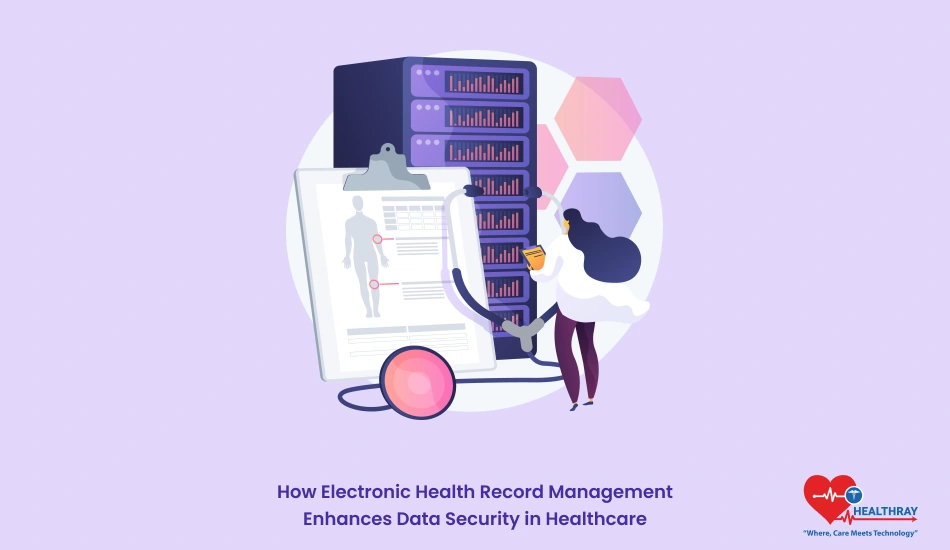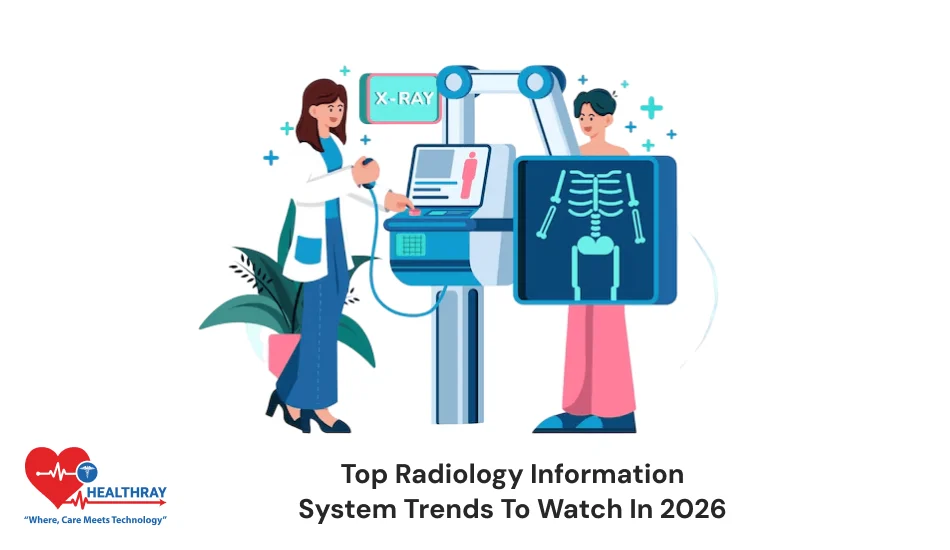Although change dawned with EHR, securing data remains basic in the medical world. From papers to digital recording, patient records seem to become more sensitive than at times before. Just as the inherent digital nature makes EHR prone to many kinds of security attacks, it has, on an equal scale, equipped it with tools and guards that paper documents lack.
The Security Measures of EHR Software: What IT Professionals, Healthcare Administrators, and Medical Practitioners Need to Know It protects the privacy of a patient as well as that of some pretty stringent healthcare regulations, but due to the security measures put in place by the EHR systems, the healthcare administrators, IT professionals, and medical practitioners need to be aware of these. This guide traces the evolution of data security in EHR management, identifies common problems encountered, sets up regulatory standards, and gives best practices on how to keep patient data safe.
In the sections that follow, we first describe EHRs in general, then enumerate key security procedures, and examine how EHRs uniquely heighten data security within healthcare.
Understanding Electronic Health Records (EHRs)
EHRs-Electronic Health Records, or e-records. Those are electronic versions of a patient’s paper chart. They include more than just notes: demographics, medical history, chief complaints, diagnoses, medications, immunization dates, allergies, lab results, and much more. Paper files often spread over a care continuum of multiple locations, but EHRs are a centralized, accessible system-often more efficient for providers and patients to navigate as well.
EHRs contribute in numerous ways. Real-time information is now accessible to healthcare providers to make decisions on faster and better-informed treatment decisions. EHRs can be transferred safely between licensed care givers. The patient experience is in no way delayed, and is in no way dependent on whether it occurs in routine checkup or in emergency situation. EHR keeps all the patient information at one place and does not allow duplicate data, thus reducing the danger of making a medical error.
Therefore, the EHR should be highly instrumental in patient care to the practitioner. However, with the benefits come great responsibilities-in this case, data security. The convenience brought about by its central nature just makes it the target for cyberattacks and an access not sanctioned. Therefore, this leads me to conclude on the significance of robust security mechanisms in EHR systems, leading on from the rest of the sections.
EHR Data Management Security Measures

In any EHR, the security of the data depends majorly on very broad protections which ensure that patients’ information is not used without authorization. Such must ensure that patients maintain trust, help the organization ensure regulatory compliance and protection against attacks by cyber perpetrators. There exist three types of safeguards about the security of the EHR systems. These can be technical, administrative, or physical.
Technical Safeguards
Technological safety measures form the skeleton of EHR data security. These refer to the software and tools that bar access, and examples include
- Encryption
The patient’s information is encrypted. They will, therefore, not be able to read the information if unauthorized access happens unless they possess the correct decryption key.
- Access Controls
Users with access rights to the EHRs, such as physicians, nurses, or clerical staff, are given access and/or access via multi-factor authentication or role-based access controls. Increasingly, healthcare organizations are extending this to Active Directory MFA and identity security frameworks to safeguard both human and non-human identities that access patient data.
- Audit Trails
Audit trails EHRs also may have a logging system in place that records who accessed or updated data. Such audit trails often trace which areas may contain breaches of sensitive data, while also enforcing organizational policies.
Administrative Safeguards
This category mainly deals with the establishment of data security policies and procedures. Such paramount administrative safeguards involve:
- Data Security Policies: The healthcare facility has to clearly delineate the data policies and policies regarding employee role and expectation for violating those kinds of policies.
- Staff Training: Data security procedures are in every step in processing EHR. EHR users-most employees-also know that data is vital and is handled with specific protocols. Some learn how not to fall victim of phishing scam as well as all other kinds of cyber threat.
- Incident Response Plans: It should prepare for incident response such as breaches or security incidents by effectively managing risk exposure in advance. A really effective response plan allows the provider healthcare to act quickly in case of incidents, which inevitably reduces the potential breaches.
Physical Safeguards
Physical security safeguards physically guard hardware components of EHR systems, like servers, data storage facilities, and equipment. Examples include:
- Secure Facilities: The physical facilities of servers and data centers should be accessible only to authorized people, and access is normally allowed by the use of either biometric locks or with a key card.
- Device Security: Wherever EHRs are accessed by devices, most health care organizations will employ encryption and passwords. When devices are left unattended, screen lock will ensure that no unauthorized persons make use of them.
- Backup Systems: It will easily retrieve the data in case of hardware failure or cyber attacks; hence, the downtime and loss of data will be minimized.
These security systems make an excellent defense system for EHRs, thus making unauthorized access tougher while safeguarding the information related to the patients. The next section will further introduce regulation which implements this type of security in healthcare.
Regulatory Compliance and Standards
Regulations serve as the ground for supporting secure EHR information. If requirements are not complied with, health care organizations have to face stern liability in those matters. The body of rules with a background that is largest in any state for guiding American health care comprises standards beyond America that are mostly the same in essence.
These requirements should be observed, both legally and follow a demand so that a patient can trust care providers, hence reducing their risk in case of data breaches.
Health Insurance Portability and Accountability Act (HIPAA)
HIPAA is probably the most stringent requirements to be implemented to govern patient data in the United States. Under HIPAA, health care organizations are expected
- Protect Patient Information: The health care providers should assure all the parties that the patient’s information is secure and safe in electronic or paper form.
- Use Safeguards: HIPAA advises both technical and administrative as well as physical safety measures to safeguard the information.
- Conduct Risk Analysis: The periodic analysis will result in the identification of areas of vulnerabilities present in EHR and controls will be updated according to the changing threats.
- Ensure Data Integrity and Access: HIPAA dictates that data must be available to authorized persons on the same level of protection against unauthorized alterations or destructions.
General Data Protection Regulation (GDPR)
This is a wonderful part of the regulation for health care providers to treat patients of the European Union. The reason is that the GDPR is data privacy and the control of a person’s personal data; thus, in the EHR system, the effects are as under:
Data Minimization: It is stated that the health care provider should gather and store just the amount of data necessary to serve the particular health care purpose.
Right to Access and Erasure: patients should be granted a right to access their data and should have a right of request deletion. This changes the management of EHRs.
Breach Notification: It has ensured that organisations should notify data breaches to the relevant authorities within 72 hours so transparency and accountability have been enhanced.
Other Relevant Standards
In addition to HIPAA and GDPR standards, most healthcare providers have other standards which are basically used in giving healthy data security improvements, such as
ISO/IEC 27001: This standard defines guidelines regarding information security system management and thus helps to shape and govern data security accordingly within the healthcare establishments.
NIST Framework: NIST provides a general framework about cybersecurity. Therefore, a healthcare organization can leverage that as a foundation to construct upon a very broad level strategy regarding cybersecurity.
Following the laid standards helps reduce the risk of hacking and increases their confidence even more between the healthcare providers and their patients. Adherence to them would imply constant self-struggle since failure to adhere to them would imply dire consequences, for example, loss of clients’ trust and reputation. The next section discusses the benefits that EHRs have towards improving safety concerning information security within health care providers.
Advantages of EHRs in Data Safety

EHRs have many advantages in terms of safety over the paper record, with much better safety of patient data. While EHR Software Systems, by design, are supposed to be built with a high degree of security, at the same time, by making data more accurate, accessible, and controllable as regards access, they are intrinsically more security-enhancing.
Higher Accuracy and Reduced Errors
Digital records reduce the events that may occur with paper-based record, such as illegible cursive hand or even losing a document. EHRs ensure documentation is clean, clear, and free of errors as compared to paper-based records. Therefore, ensuring the same information held on patients is accurate but without depending on human error for security purposes.
Access in Real-Time with Controlled Permissions
These EHR systems directly permit the user access to the patient data, and this is really a valuable product for decision making. Users can be allowed differential permissions so as not to let the data lie in front of a small group of people expected to view them. Use of RBAC prevents access and view of unauthorized information on part of the staff; however, access is granted to only staff allowed to view sensitive information.
Audit trails to foster accountability and transparency.
All activities conducted on an EHR system are stored in an audit trail that logs which users access the information, what changes take place, and when those changes occurred. An open record of user activity puts a spotlight on the accountability of healthcare providers as well as shines a light upon a potential violation of security, bringing it to the attention of the health care organization. Data security is accomplished through compliance but also satisfies regulated requirements.
Less Exposure to Physical Harm
Paper-based records face destruction and loss and unprivileged access. EHRs, therefore, do away with exposing paper files to environmental risks of fire, floods, or damage. Digital storage ensures that a patient’s file is retrievable in case of emergencies which are an important factor toward continuity of care and integrity of data.
Better Data Encryption and Secure Transfers
EHRs provide the required encryption when the patient’s data is to be transmitted between or within health-care providers or even locations. Encryption refers to the process that transforms data into unreadable code; only authorized users will have the decryption keys, which enhance an extent of cyber-protection security.
EHRs support, therefore confidentiality, integrity, and availability of patient data, but adopt providers to the most organized ways in terms of securing data. Once health care organizations embrace the benefits of EHRs regarding its digital edge, safety features surrounding the data are maximized with few unauthorized accesses as well as very tightened up standards on safety.
Conclusion
EHRs in a hospital management system assure benefits that are not controversial-reduced risk of loss of physical records, increased accuracy, and the basic audit trails create an accountability culture. However, the growing sophistication of cyber threats calls for change or adaptation in security measures among healthcare organizations. This would help health providers further extend their lines of defense while keeping patient information safe inside a Hospital Management System. It will involve best practices in the analysis of real security cases and awareness of updates in regulations.





